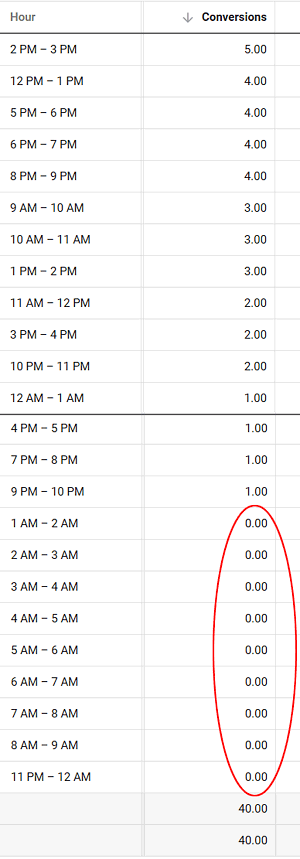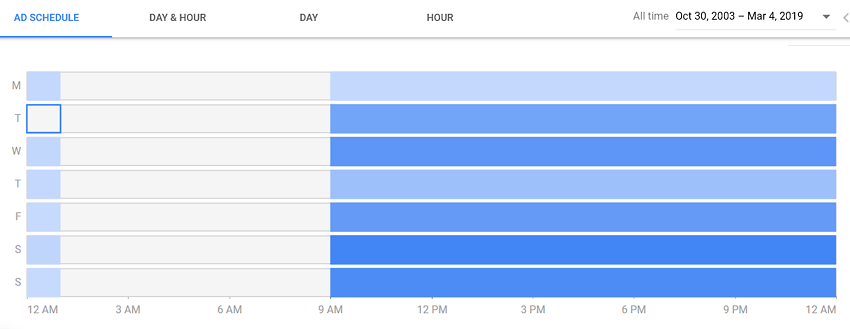Display ads are a good way to advertise to a large audience at low cost. You can maximize your PPC campaign effectiveness by strategically targeting the demographics and schedule of your audience. This article shows how to “daypart” the ad schedule of a display campaign.
What is Dayparting?
Dayparting is the process of scheduling your ads to run on certain days or time of day to better target your audience. Dayparting can ensure your ads are run only during business hours, or when people are most likely to click. Dayparting can improve your CTR and thus your quality score.
Display Ads
Display ads are banner ads that run on the Google affiliate network (see Figure 1). Display ads are typically used for branding and traffic building. They are like billboards along a highway, you are reminding viewers that there is a dentist or lawyer in the area. So display ads typically have lower click-through rates (CTR) than search ads, where people are searching for something specific. However, if you run the numbers and experiment you’ll find that display ads can be competitive with search ads in the right situation.
Display Versus Search Ad CPA
Let’s take a look at some performance metrics to see how display ads stack up against search ads. The average CTR is much lower (about 5.5X lower) for display ads, averaging 0.35% for display, and 1.91% for search (Volovich 2018). However, the average cost per click (CPC) is much lower (about 4.3X lower) for display ads, averaging $0.63 for display, and $2.69 for search ads (Irvine 2018). The average conversion rate is about 4.9X higher for search ads, averaging 3.75% for search ads, and 0.77% for display ads (Gabbert 2018). So the cost per acquisition (CPA) for search is slightly lower than display on average (CPA = CPC/Conversion Rate), or $0.71 CPA for search ads, and $0.81 for display. But this is an overall average, with the right high-converting landing page in the right industry display ads can actually be cheaper per conversion than search ads.
We have found that with an effective landing page, display ads can provide relatively low cost conversions for clients. Typically companies will run their display ads 24 hours a day, but there may be a better way.
Dayparting Display Ads
Running your display ads 24 hours a day is a good way to get cheap traffic and if done right, leads. However, when you look at the actual data you may find, especially for local businesses, that people tend to click and convert less in the overnight hours. That is what we found with one dental client (see Figure 2). Looking at the data by hour (in Google Ads click on Schedule -> Hour) reveals that no conversions were had from 1 to 9am EST (see Figure 2). Running ads during the witching hours was burning money, but getting no conversions.

To edit your ad schedule in Google Ads from the campaign level click on “Ad Schedule” then the edit button (see Figure 3). You can have up to 6 hour range targets per campaign.

Based on the data, we set up two scheduling targets, 9am to 12 am, and 12 am to 1am, excluding the overnight hours of 1am to 9am when no conversions were seen (see Figure 4). The campaign should become more efficient by redistributing the client’s budget towards the hours where people are more likely to convert.

Figure 4: Dayparting Ad Schedule
Conclusion
Dayparting your PPC ads can make your campaign more efficient. By scheduling your ads to show when people are more likely to click and convert you can improve your CTR, quality scores, conversion rate, and ROI on your advertising spend.
Further Reading
- Gabbert, 2018. “What’s a Good AdWords CTR/CPA/Conversion Rate in 2018?”
The average conversion rate in AdWords across all industries is 3.75 percent for search and 0.77 percent for display. - Irvine, 2018. “Google Ads Benchmarks for YOUR Industry”
The average cost per click in AdWords across all industries is $2.69 for search and $0.63 for display. - PhillyDentistry.com
Dr. Ken Cirka’s website PhillyDentistry.com kindly gave permission to use his PPC account for this article. - Volovich, 2018. “What’s a Good Clickthrough Rate? New Benchmark Data for Google AdWords”
Across all industries, the average CTR for a search ad is 1.91%, and 0.35% for a display ad.

